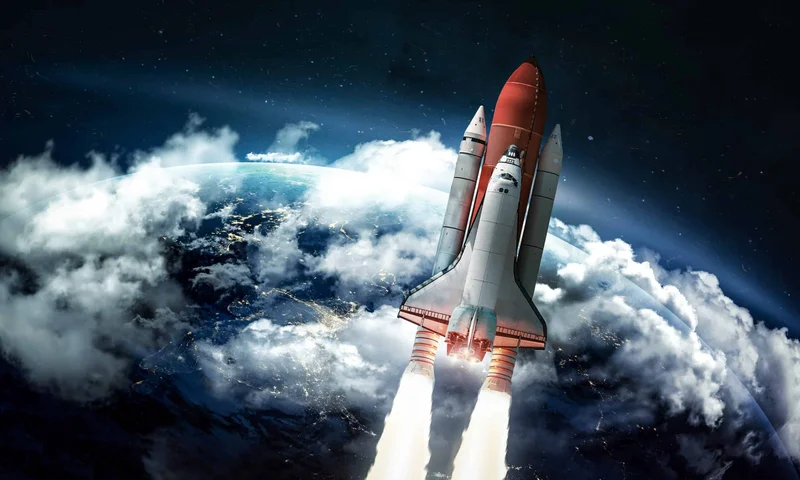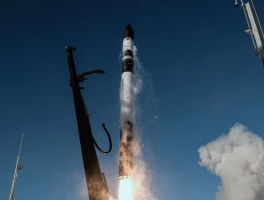So, SpaceX finally managed to not blow up its giant, shiny rocket. Forgive me for not throwing a parade.
The internet, offcourse, is losing its collective mind over Starship V2’s “stunning redemption arc.” You’ve seen the headlines. After exploding three times earlier this year, the big metal silo soared, dropped off some fake satellites, and even fired up its engine again in space, leading to reports that SpaceX hits key milestones in Starship megarocket’s 11th test flight: Highlights. SpaceX’s own website declared that “Every major objective of the flight test was achieved.”
Great. Wonderful. They finally passed the test after flunking it repeatedly. This isn't a breakthrough; it’s catching up on homework. It’s like celebrating a kid for finally getting a C- after three straight Fs. We’re so desperate for a win, so high on the fumes of billionaire space-dreams, that we’ve mistaken basic competence for a miracle.
Let’s be real. This was a necessary step, but it’s just that—a step. Calling this the dawn of a new era is like calling the first successful engine sputter on a Model T the beginning of the interstate highway system. It’s a long, long way from here to there, and the road is littered with problems nobody seems to want to talk about.
The Shiny Toy vs. The Workhorse
While everyone was fawning over the Starship launch in Texas, something else was happening in the pre-dawn dark of Florida. At 5:27 a.m., a Falcon 9—the boring, reliable, money-making backbone of SpaceX—tore a hole in the sky. It was the 130th Falcon 9 launch this year alone. Think about that. The 130th. It was another mission where SpaceX sends 28 Starlink satellites to low Earth orbit in predawn launch – Spaceflight Now, adding to a constellation that already numbers over 8,600.
I wonder if anyone at Cape Canaveral even looks up anymore. Does the ground still shake the same way when it’s the 91st Starlink mission of the year? Or is it just background noise now, the rumble of a celestial delivery truck making its rounds? That booster, B1095, was on its third flight. It landed itself on a drone ship named ‘Just Read the Instructions’ for the 138th time. It’s a routine. It’s a business.
This is the fundamental disconnect in the SpaceX story that the fanboys refuse to see. Starship is the flashy, experimental concept car in the showroom, the one that draws all the cameras and breathless headlines. Falcon 9 is the beat-up Ford F-150 out back that actually does all the work, day in and day out. One is a promise, a glorious, Mars-colonizing fantasy. The other is a relentless, brutally efficient satellite-deployment machine that pays the bills for the fantasy.

And while the fantasy is exciting, it's the machine that tells the real story. The story of a company that has turned low Earth orbit into its own private toll road. This isn't about exploration; it's about infrastructure. It's about dominating a market. So when SpaceX talks about Starship V2 providing "valuable data," what I hear is the R&D department justifying its budget. What does that data even look like? Is it a spreadsheet? A bunch of squiggly lines on a graph that tells them the thing is slightly less likely to spontaneously disassemble next time?
The Unspoken Hurdle
SpaceX’s own statement gives the game away, if you bother to read past the triumphant PR fluff. “The focus now turns to the next generation of Starship and Super Heavy,” it says. The next generation. So, this version, the one that just had its big "redemption," is already on its way to the museum. This is a bad sign. No, "bad" doesn't cover it—this is a screaming red flag that the current design has hit a wall.
They talk about “propellant transfer” as the next big thing. And honestly, this is where the whole beautiful dream slams into the ugly wall of physics.
To get to the moon, let alone Mars, Starship has to be refueled in orbit. It’s like trying to gas up your car on the highway by having a tanker truck perfectly match your speed and connect a fuel hose while you’re both doing 70 mph. Except in space. With cryogenic fuels that are constantly boiling off. In zero gravity. It’s a feat that has never, ever been done on this scale. Not even close.
It’s the single biggest technical hurdle standing between here and a NASA astronaut planting a boot on the lunar surface. It’s an engineering nightmare of the highest order. And yet, it’s treated as just another item on the checklist, right after “don’t explode on launch pad.” Are we supposed to believe that a company that took four tries to get its rocket to fly a basic trajectory has already cracked the code on one of the hardest problems in astronautics? Give me a break.
All the successful test flights in the world are just theater if they can’t solve this one problem. Without orbital refueling, Starship is the world’s biggest, most expensive rocket capable of… going around the Earth and coming back down. It’s a multi-billion-dollar roller coaster.
So yeah, they had a good day. The rocket went up, and it came down in roughly the right number of pieces. But the real work, the impossible work, hasn't even begun. And I can’t help but wonder if they’re just putting on a good show while they quietly sweat over a problem they don’t know how to solve.
So, Are We Packing for Mars Yet?
Look, I get it. Progress is messy. You have to break a few eggs—or in this case, a few city-block-sized rockets—to make an omelet. But let’s pump the brakes on the "mission accomplished" narrative. SpaceX proved its V2 rocket can fly. That’s it. They haven’t proven it can be a reliable, reusable vehicle. They haven’t proven they can build the next version. And they are nowhere near proving they can solve the orbital refueling nightmare that makes the entire Moon-and-Mars architecture work. Until they do, all of this is just a very, very expensive fireworks display. Don’t start packing your bags.

